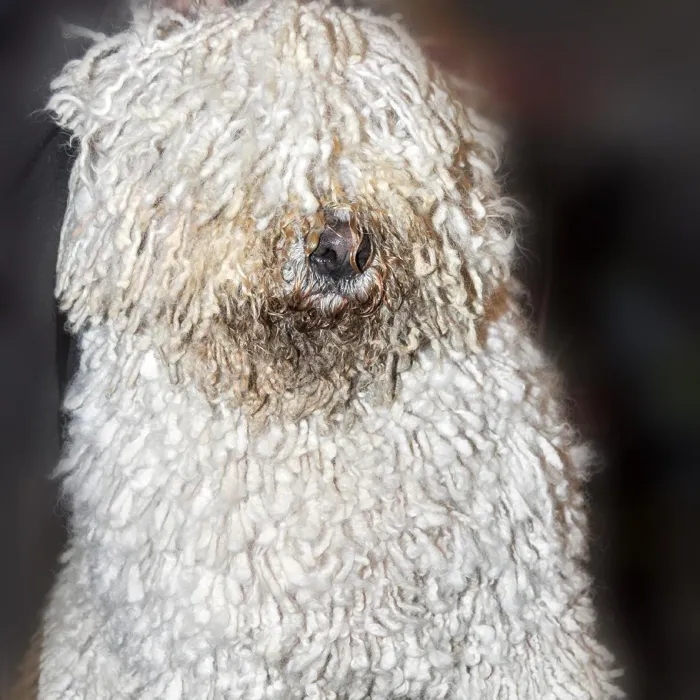Komondor

A powerfully large Hungarian flock guardian covered in profuse white cords from head to tail, the Komondor is among the world’s most recognizable breeds. The independent and protective Kom requires a firm, experienced hand at training.

Ask About Komondor ?
Breed Traits
Group
Working
Temperament
About
History
Standard
Nutrition
Grooming
Exercise
Training
Health
General Appearance
The Komondor is characterized by imposing strength, dignity, courageous demeanor, and pleasing conformation. He is a large, muscular dog with plenty of bone and substance, covered with an unusual, heavy coat of white cords. The working Komondor lives during the greater part of the year in the open, and his coat serves to help him blend in with his flock and to protect him from extremes of weather and beasts of prey. Nature and Characteristics: The Komondor is a flock guardian, not a herder. Originally developed in Hungary to guard large herds of animals on the open plains, the Komondor was charged with protecting the herd by himself, with no assistance and no commands from his master. The mature, experienced dog tends to stay close to his charges, whether a flock or family; he is unlikely to be drawn away from them in chase, and typically doesn't wander far. Though very sensitive to the desires of his master, heavy-handed training will produce a stubborn, unhappy Komondor. While reserved with strangers, the Komondor is demonstrative with those he loves, selflessly devoted to his family and his charges, and will defend them against any attack. The combination of this devotion to all things dear to him and the desire to take responsibility for them produces an excellent guardian of herds or home, vigilant, courageous, and very faithful.
Size, Proportion, Substance
Head
Neck, Topline, Body
Forequarters
Hindquarters
Feet
Coat
Color
Gait
Disqualifications
All pets have found there homes! Sign up to be notified when new pets are added so you don't miss out.


